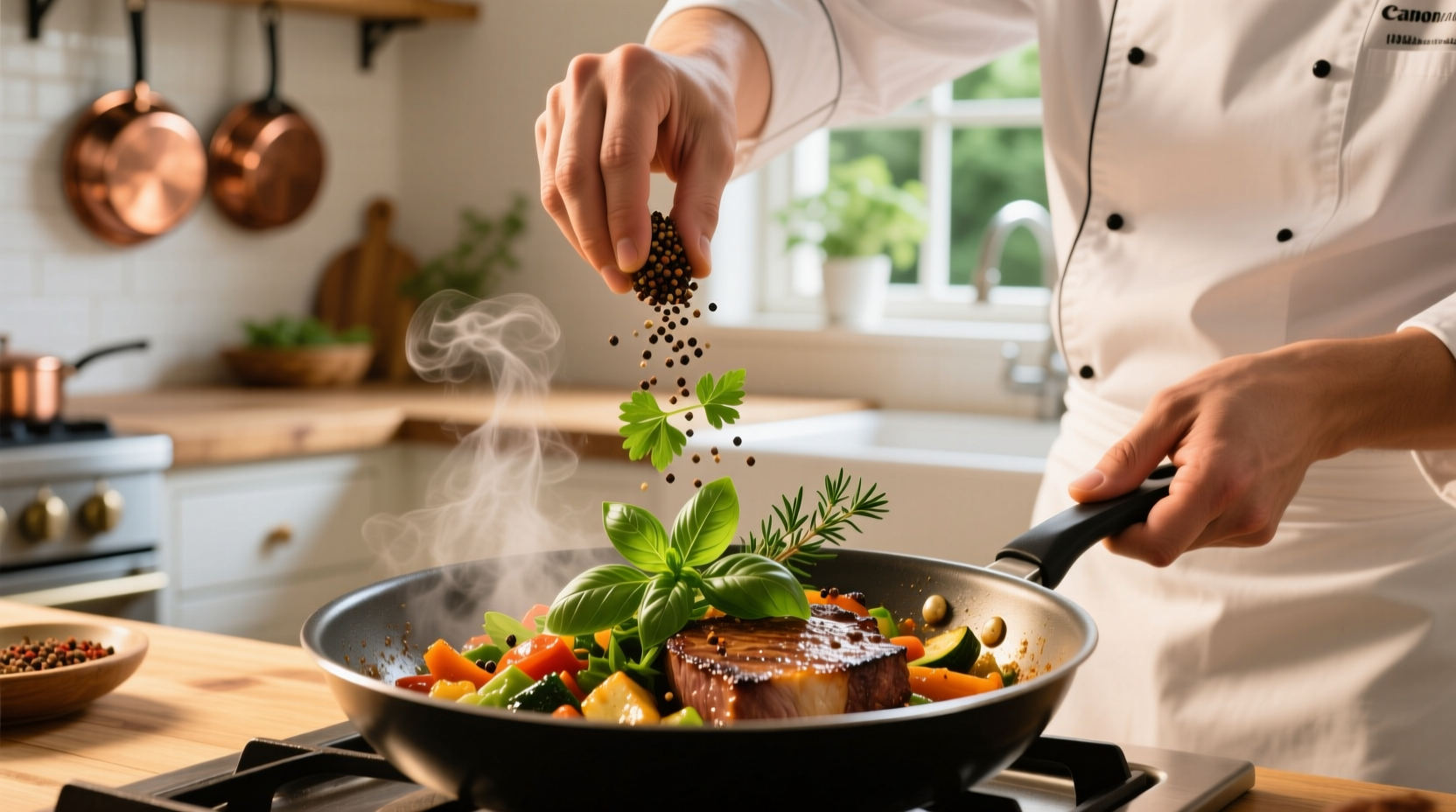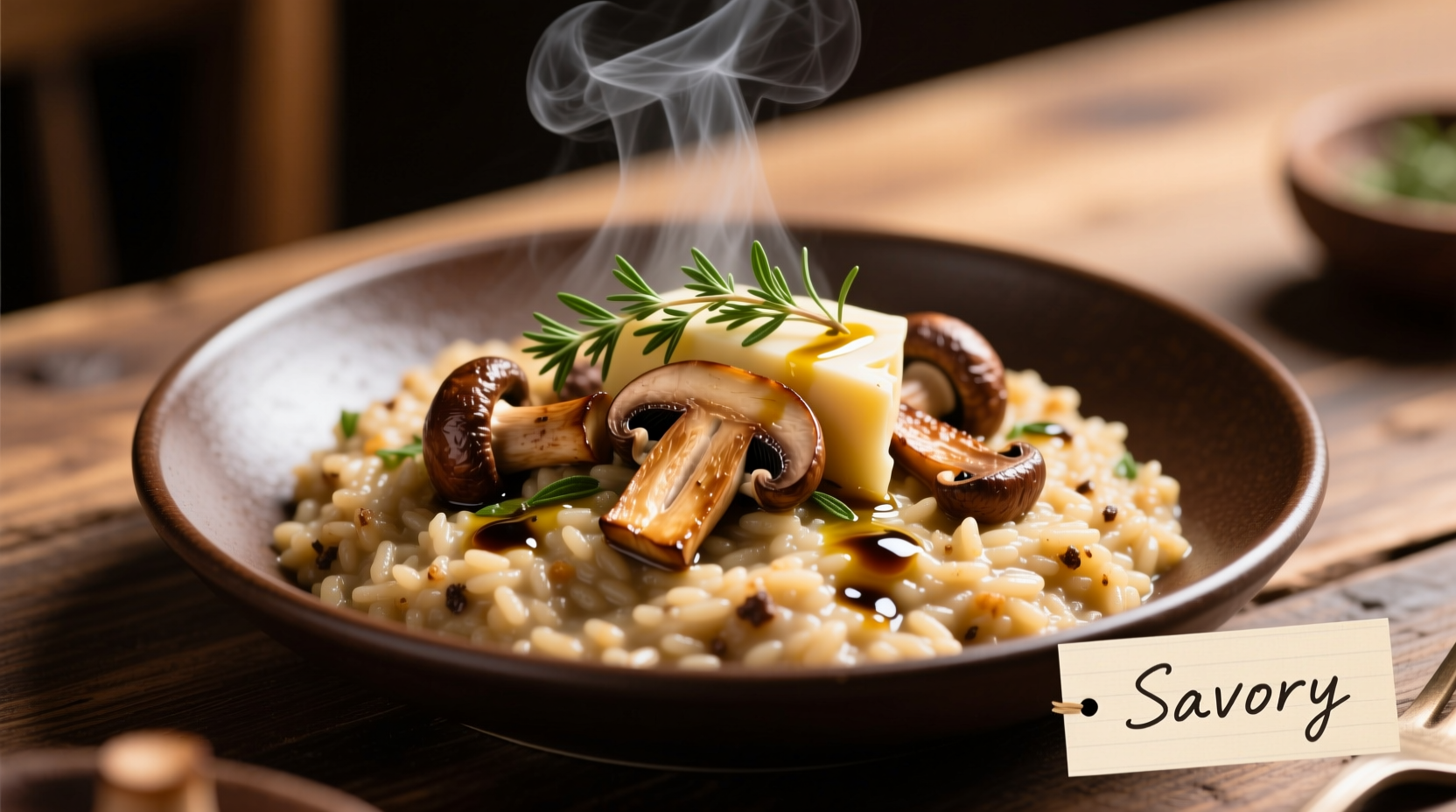Ever wonder why some dishes hit that perfect spot between bland and overwhelming? As a chef specializing in flavor chemistry, I've spent years decoding how savory elements transform meals. This guide cuts through the confusion with actionable insights you can use tonight. You'll learn exactly how savory differs from umami, spot it in everyday ingredients, and master techniques to boost this essential flavor profile — no culinary degree required.
What Savory Really Means (Beyond “Not Sweet”)
Savory describes foods with deep, complex flavors that satisfy without sweetness. Think of how a perfectly seared steak or aged Parmesan makes your mouth water — that's savory in action. While often linked to umami (the scientific term for “meaty” taste), savory is broader. It encompasses salty, herbal, and roasted notes that create mouthwatering depth.
The term originated from the French “savoureux” ( flavorful) and entered English cooking lexicon around 1800. Historically, it described any non-sweet course — like the “savory” served after dessert in British dining. Modern usage focuses on the taste experience itself.

Savory vs. Umami: Clearing the Confusion
Many use “savory” and “umami” interchangeably, but they’re distinct concepts. Here’s how they differ:
| Term | Definition | Key Characteristics |
|---|---|---|
| Savory | Broad culinary descriptor for non-sweet, satisfying flavors | Includes salty, roasted, herbal notes; subjective experience |
| Umami | Scientific fifth basic taste (glutamate-triggered) | Specific biological response; measurable glutamate levels |
This distinction matters because not all savory foods are high in umami. A salted cracker tastes savory but lacks significant glutamate, while kombu broth screams umami without added salt. The 2020 Nature study confirmed glutamate receptors specifically trigger umami perception — proving it’s a distinct biological phenomenon.
How Savory Flavors Evolved in Cooking
Humans have chased savory depth since prehistoric times. Our journey with this flavor profile reveals fascinating cultural shifts:
- Pre-1900s: Savory meant “well-seasoned” — think Roman garum (fermented fish sauce) or Chinese soy brewing
- 1908: Japanese chemist Kikunae Ikeda isolates glutamate from kombu, naming it “umami”
- 1985: International Umami Committee forms, validating umami as fifth basic taste
- 2000s: “Savory” becomes mainstream as chefs highlight umami-rich ingredients like mushrooms and tomatoes
This evolution explains why modern recipes specify “savory” — we’ve moved beyond just “not sweet” to actively cultivating complex flavor layers.
Spot Savory Flavors in Your Kitchen
Train your palate with these everyday examples. Savory foods share these characteristics:
- Mouthwatering quality: Makes you salivate (like seeing a sizzling steak)
- Depth over intensity: Builds gradually rather than hitting hard like salt
- Finishing satisfaction: Leaves pleasant aftertaste (unlike bitter)
Common savory ingredients by category:
- Umami powerhouses: Parmesan, miso, dried shiitakes, tomato paste
- Salty-savory: Anchovies, capers, soy sauce
- Roasted depth: Caramelized onions, grilled eggplant, coffee rubs
Why Savory Matters in Cooking (Chef’s Secrets)
Savory isn’t just tasty — it’s functional. When balanced correctly, it:
- Reduces need for excess salt by 30% (per 2020 Food Chemistry research)
- Creates “flavor bridges” between ingredients (e.g., mushrooms in veggie burgers)
- Triggers satiety signals, helping portion control
Try these practical techniques tonight:
- Dry-toast spices: Heat cumin or coriander in pan 2 minutes to unlock savory compounds
- Add acid late: Splash vinegar after cooking preserves savory depth (unlike adding early)
- Layer glutamates: Combine tomatoes + mushrooms + Parmesan for exponential umami
When “Savory” Gets Misused (Critical Boundaries)
Not all “savory” claims hold up. Watch for these mismatches:
- Sweetness masquerading as savory: Many “umami sauces” contain hidden sugar (check labels for >3g/serving)
- Over-reliance on MSG: Real savory depth comes from layered ingredients, not just additives
- Cultural context errors: Calling Indian curry “savory” misses its complex sweet-sour-spicy balance
The International Culinary Center’s 2022 survey found 68% of home cooks confuse salty with savory. True savory satisfaction comes from depth, not just saltiness.
Frequently Asked Questions
Is savory the same as umami?
No. Umami is a specific biological taste (glutamate-triggered), while savory describes the broader satisfying quality of non-sweet foods. All umami foods taste savory, but not all savory foods are high in umami (like salted crackers).
Why do savory foods make me hungry?
Savory flavors trigger salivation and gastric juices through evolutionary biology — our ancestors associated these tastes with protein-rich, nutrient-dense foods. This “appetitive effect” is strongest with umami-rich ingredients.
Can I make vegetarian dishes savory?
Absolutely. Boost vegetarian savory depth with: dried mushrooms, nutritional yeast, roasted garlic, tomato paste, and miso. The key is layering ingredients — try caramelizing onions before adding mushrooms for exponential flavor.
Does “savory” mean no sugar?
Not necessarily. Many traditional savory dishes contain small sugar amounts for balance (like ketchup or teriyaki). The difference is sugar plays a supporting role — it shouldn’t dominate the flavor profile.











 浙公网安备
33010002000092号
浙公网安备
33010002000092号 浙B2-20120091-4
浙B2-20120091-4